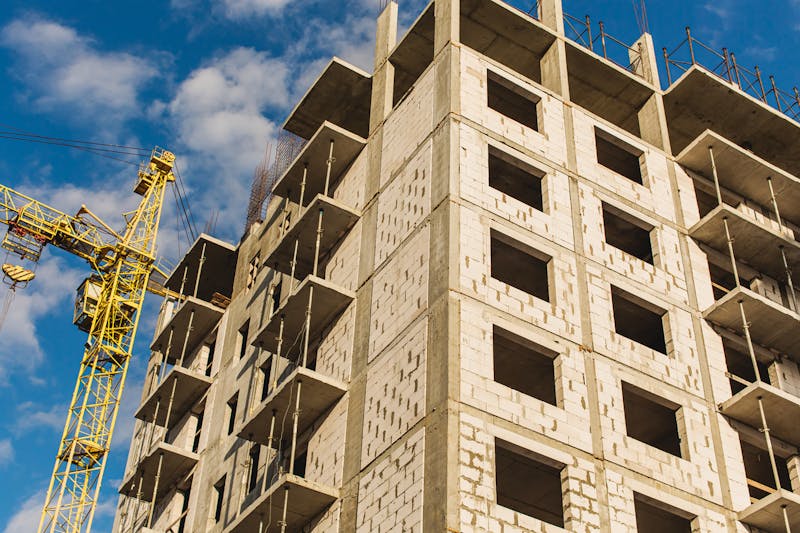
In the construction industry, especially in sectors like healthcare, the choice of construction methods can significantly impact the project's timeline and cost. Two often confused methods are modular and prefabricated buildings. Despite their similarities, they differ in design, construction, and assembly.
RAD Technology Medical Systems specializes in modular medical facilities (MMF) that offer fast and efficient solutions for healthcare environments. In this blog, we will discuss the distinctions between modular and prefabricated buildings and explain why modular construction is a wise option for medical facilities.
What Are Prefabricated Buildings?
Prefabricated buildings are structures in which components are manufactured off-site and then transported to the construction location for assembly. Prefabrication can take different forms, such as panelized systems where walls, roofs, or floors are built separately and then pieced together on-site. It also includes component construction, where smaller building elements like windows or doors are produced off-site. The level of on-site assembly required can vary based on the type of structure being built, offering flexibility.
What Are Modular Buildings?
Modular buildings involve constructing entire sections or modules of a building in a factory. These modules come complete with electrical, plumbing, and interior finishes, and are then transported to the site for assembly into a complete structure.
Modular construction is commonly used for residential homes, offices, and healthcare facilities due to its efficiency and high level of quality control. At RAD Technology Medical Systems, we specialize in modular medical facilities, providing turnkey solutions for healthcare providers who need high-quality, fully functional medical spaces promptly.
The Modular Building Process
- Design and Manufacturing: Modules are built in a controlled factory environment according to the project's specific needs.
- Transportation: These modules are transported to the site.
- Assembly: The modules are then installed and connected, often completed in a matter of weeks.
- Customization: Modular facilities, from exam rooms to operating theaters, to radiotherapy vaults, can be customized to meet the unique requirements of healthcare environments.
Key Differences Between Modular and Prefabricated Buildings
While both modular and prefabricated buildings are constructed off-site and assembled on-site, several key differences set them apart:
1. Construction Process
- Prefabrication: Involves building individual components (like panels or sections) that are later assembled on-site.
- Modular: Entire sections of the building are constructed in a factory and assembled on-site in a matter of days.
2. Speed of Construction
- Prefabrication: Offers speed by minimizing on-site work, but assembly time can vary based on the project.
- Modular: Significantly reduces construction time since large portions of the building arrive fully assembled, cutting project timelines by up to 50%.
3. Design Flexibility
- Prefabrication: Allows for flexible design options, especially for smaller projects.
- Modular: This type offers custom designs that can be tailored for specific uses, particularly in medical facilities requiring consistent room sizes and layouts.
4. Cost
- Prefabrication: This may have varying costs depending on the project's complexity.
- Modular: Often more cost-effective for large projects due to economies of scale, particularly when it comes to healthcare facilities that require standardized rooms and equipment.
5. Installation and On-Site Work
- Prefabrication: Requires more on-site labor for assembly.
- Modular: Minimizes on-site work since most of the building is already complete upon arrival.
Benefits of Modular Buildings for Healthcare
Modular construction is especially advantageous in the healthcare sector, where speed, efficiency, and quality are critical. RAD Technology Medical Systems provides Modular Medical Facilities (MMF) that offer:
- Fast Deployment: Quick assembly means your facility can be operational in weeks, not months.
- Scalability: Modular buildings can be expanded or modified easily to accommodate growing program needs.
- High-Quality Control: Built in a factory under strict conditions, ensuring each module meets healthcare standards.
- Minimized Disruption: Since most of the construction occurs off-site, there is minimal disruption to your existing healthcare services.
RAD Technology Medical Systems Provides Tailored Modular Medical Solutions for Your Needs
When choosing between prefabricated and modular buildings, it's crucial to consider your project's specific requirements. Modular construction often offers a better solution for medical facilities due to its ability to deliver complete, high-quality structures in a fraction of the time. At RAD Technology Medical Systems, we understand the demands of healthcare environments and have tailored our modular solutions to meet those needs.
If you want to learn more about how RAD Technology Medical Systems can assist with your medical facility needs, contact us today to explore your options and get started on your next project.